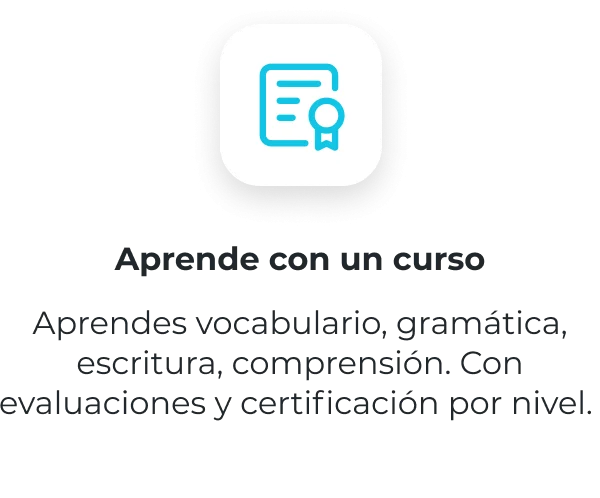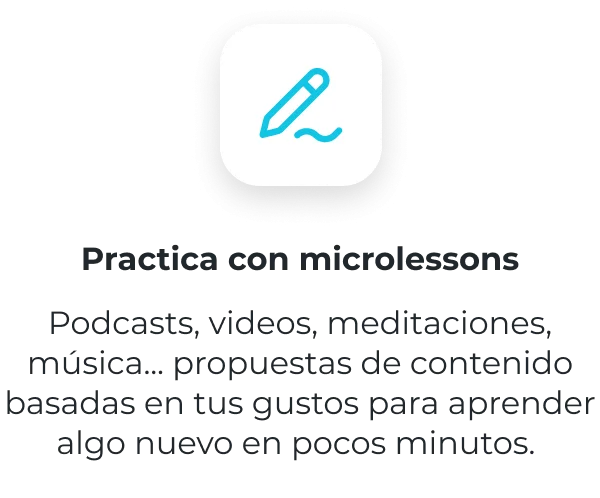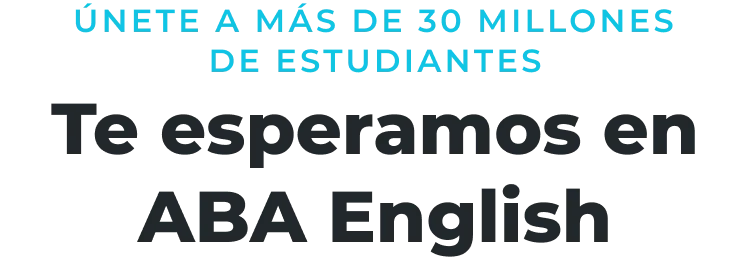El verbo to have en inglés
Aprende a utilizar el verbo to have, uno de los verbos más importantes en el inglés. Regístrate gratis en ABA English y disfruta de una clase de gramática en vídeo, nueva y gratuita, todos los días.
Cuando hablamos de verbos en inglés, generalmente el más común y el más importante que citamos es el verbo to be, sin embargo, también existe otro verbo muy importante que se usa en varios tiempos verbales, el verbo to have.
To have es un verbo irregular que significa “tener” o “haber”. También es utilizado como verbo auxiliar en la formación de los tiempos verbales perfectos, como el pasado perfecto simple o el pasado perfecto continuo. ABA English enseña todo lo que necesitas saber sobre este verbo y cómo usarlo sin errores, sólo hay que echar un ojo a este artículo.
Conjugación del verbo to have
Como mencionamos arriba, el verbo to have es un verbo irregular, por lo tanto, no sigue las reglas comunes de conjugación de verbos en inglés. Miramos abajo la conjugación del verbo to have en los tiempos verbales más comunes.
| Present Simple | Present Continuous |
| I have You have He/She/It has We have You have They have | I am having You are having He/She/It is having We are having You are having They are having |
| Past Simple | Past Continuous |
| I had You had He/She/It had We had You had They had | I was having You were having He/She/It was having We were having You were having They were having |
| Future Simple | Future Continuous |
| I will have You will have He/She/It will have We will have You will have They will have | I will be having You will be having He/She/It will be having We will be having You will be having They will be having |
+30 MILLONES DE ESTUDIANTES
Únete a la academia digital de inglés
más grande del mundo y aprende inglés
Verbo to have como auxiliar
Como ya sabes, el inglés cuenta con varios verbos auxiliares que son comúnmente utilizados para formar diferentes tiempos verbales. En el caso del verbo to have, este es un verbo auxiliar que ayuda a formar los tiempos verbales perfectos como presente perfecto simple, pasado perfecto simple, pasado perfecto continuo, etc.
Para formar los tiempos perfectos simples, necesitamos utilizar el verbo to have en el pasado, presente o futuro (dependiendo del tiempo verbal que estemos utilizando) y el verbo principal en el participio. En los casos de los tiempos verbales continuos, utilizaremos el verbo to have nuevamente en el pasado, presente o futuro, el verbo to be en el participio pasado been y el verbo principal en el gerundio.
Mira la tabla más abajo con todos los tiempos verbales perfectos donde el verbo to have es utilizado como auxiliar. Aquí utilizamos el verbo to do (hacer) para ilustrar el uso de los verbos en participio y gerundio conjuntamente con el verbo to have:
| Present Perfect | Present Perfect Continuous |
| I have done You have done He/She/It has done We have done You have done They have done | I have been doing You have been doing He/She/It has been doing We have been doing You have been doing They have been doing |
| Past Perfect | Past Perfect Continuous |
| I had done You had done He/She/It had done We had done You had done They had done | I had been doing You had been doing He/She/It had been doing We had been doing You had been doing They had been doing |
| Future Perfect | Future Perfect Continuous |
| I will have done You will have done He/She/It will have done We will have done You will have done They will have done | I will have been doing You will have been doing He/She/It will have been doing We will have been doing You will have been doing They will have been doing |
Acuérdate de que el verbo to have también puede aparecer como auxiliar y como verbo principal en los tiempos perfectos:
- I had had a coffee before lunch. (Yo había tomado un café antes del almuerzo.)
- She had been having extra classes after school. (Ella había estado teniendo clases extras después del colegio.)/li>
Ejemplos del uso del verbo to have
Ahora que ya conoces las diferentes conjugaciones del verbo to have, veamos algunos ejemplos prácticos de su uso:
Verb to have en el Present Simple
- I have many friends from childhood. (Yo tengo muchos amigos de la infancia.)
Verb to have en el Past Simple
- She had 3 apples in her bag but lost 2 on the way home. (Ella tenía 3 manzanas en su bolsa, pero perdió 2 de camino a casa.)
Verb to have en el Future Simple
- They will have a beautiful summer wedding. (Ellos tendrán una hermosa boda de verano.)
Verb to have en el Present Perfect
- I have done nothing wrong. (Yo no he hecho nada mal.)
Verb to have en el Past Perfect
- We had gone to the movies after dinner. (Nosotros habíamos ido al cine después de cenar.)
Verb to have en el Past Perfect Continuous
- I had been watching TV when my mom came home from work. (Yo estaba viendo la televisión cuando mi madre llegó a casa del trabajo.)
Consejos para conjugar el verbo to have
Como todos sabemos, la práctica lleva a la perfección. Con el verbo to have no es diferente. Veamos algunos consejos abajo para profundizar tu conocimiento:
- Escribe diferentes frases en diversos tiempos verbales para practicar el uso del verbo to have.
- Lee textos, libros o artículos y señala el verbo to have siempre que lo encuentres e identifiques qué tiempo verbal está siendo utilizado.
- Repite en voz alta las frases usando el verbo to have, principalmente en tercera persona y en el pasado donde el verbo es irregular, para que te acostumbres al uso oral del verbo.
¿Conoces tu nivel
de inglés?
Haz un test ahora.
Regístrate en nuestra página y accede gratis al test de nivel. En pocos minutos conocerás tu nivel y podrás seguir avanzando con el curso.

Ejercicios para practicar el verbo to have
Ahora que ya conoces todos los usos del verbo to have, rellene los espacios en blanco con el verbo to have de acuerdo con el tiempo verbal y el verbo principal indicado:
- I __________ the chicken for dinner. (Future Simple – to have) (Yo tendré el pollo para cenar.)
- We _______________________ the plans when Mary joined us. (Past Perfect Continuous – to discuss) (Nosotros habíamos estado discutiendo los planes cuando Mary se nos unió.)
- If they ______________ before, we wouldn’t be here now. (Past Perfect – to talk) (Si ellos hubieran hablado antes, no estaríamos aquí.)
- She _____ four sisters. It’s a big family. (Present Simple – to have) (Ella tiene cuatro hermanas. Es una gran familia.)
- You ______________ a hard day on your birthday. (Past Continuous – to have) (Tú estabas teniendo un mal día en tu cumpleaños.)
Respuestas: 1. will have; 2. had been discussing; 3. had talked; 4. has; 5. were having.
Otros enlaces de tu interés:


























